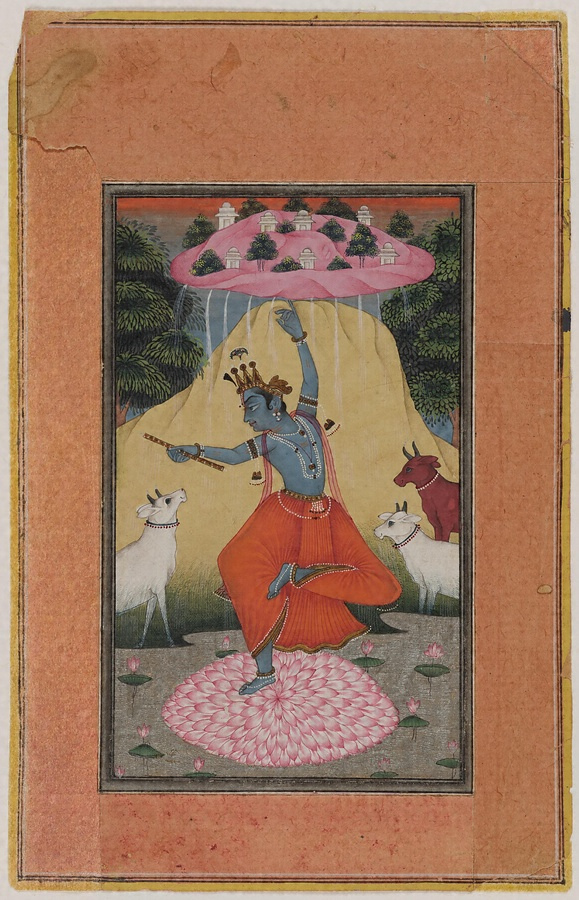ゴーヴァルダナ山を持ち上げるクリシュナ
ごーヴぁるだなさんをもちあげるくりしゅな
概要
インドでは、インド神話や、シヴァ神、ヴィシュヌ神などのヒンドゥー教の神々、王の肖像や歴史的なエピソード、男女の恋愛などさまざまなテーマを緻密なタッチと鮮やかな色彩で描いた、細密画とよばれる絵画のジャンルが発達しました。多民族国家であるインドでは、細密画の表現も地域によってさまざまで、それがまた魅力であるともいえます。
ヒンドゥー教では、ヴィシュヌ神は10の異なる姿に身を変えると考えられており、クリシュナはその8番目の化身です。この作品は、クリシュナにまつわる神話のひとつを描いたものです。村の牛飼いたちが雨の神であるインドラ神を祭っていたところ、クリシュナが現れ、インドラ神よりも、牛や牛飼いたちに関わりの深いゴーヴァルダナ山を崇めるよう勧め、人々は供え物を捧げ祈りました。これに怒ったインドラ神は、村に大雨を降らせます。するとクリシュナは、いきなりゴーヴァルダナ山を引き抜くや、傘のように片手で頭上に掲げ、人々や牛の群れを大雨から守りました。こうしてクリシュナは7日の間、山を支えていたとされています。

